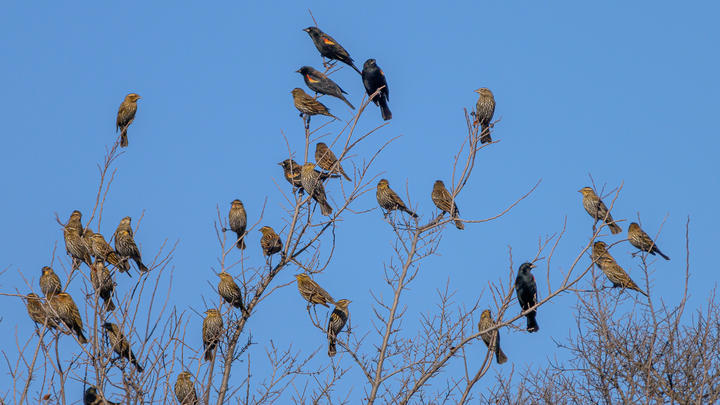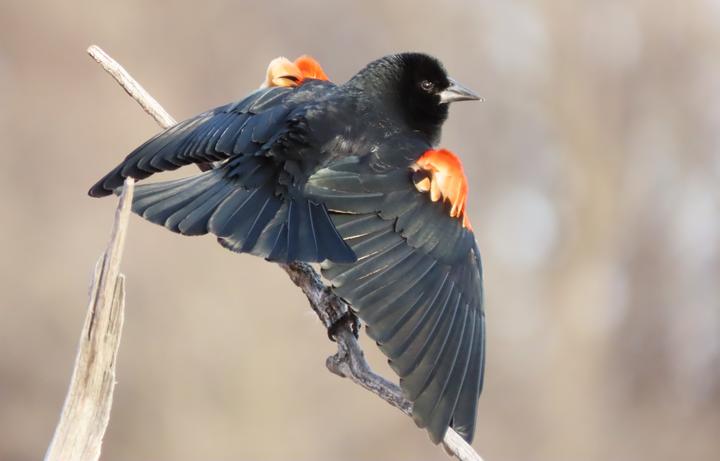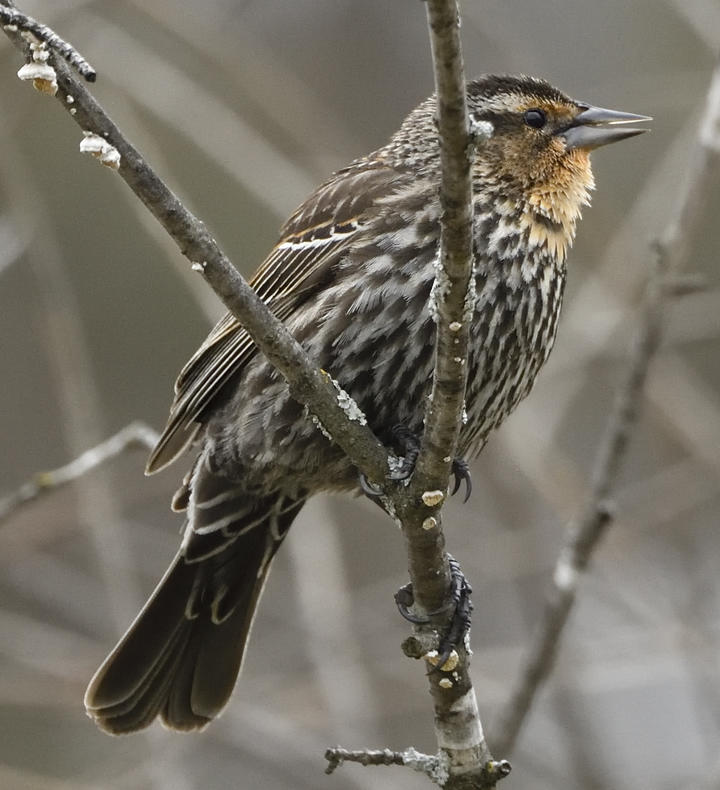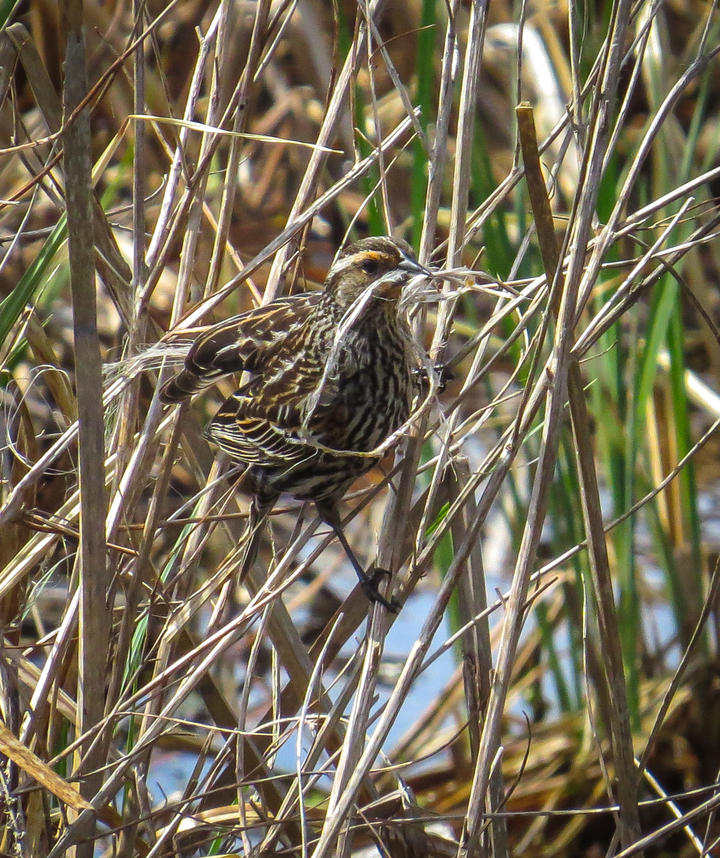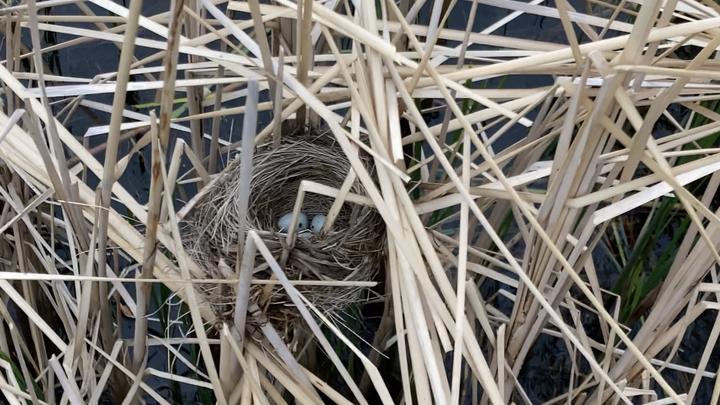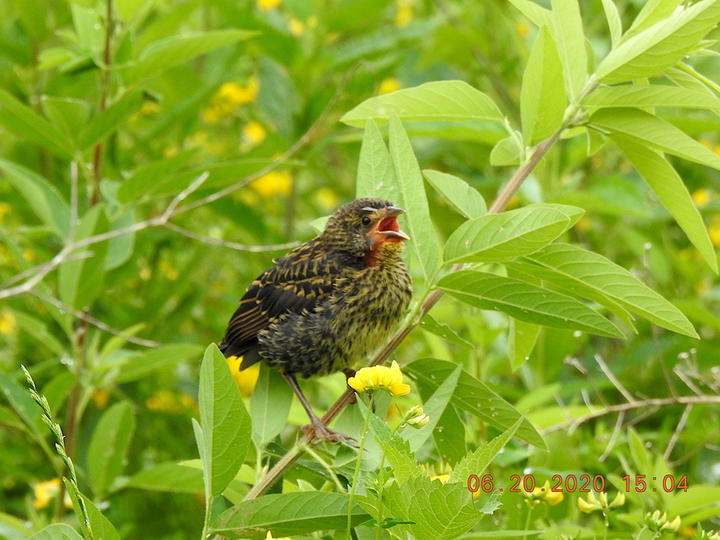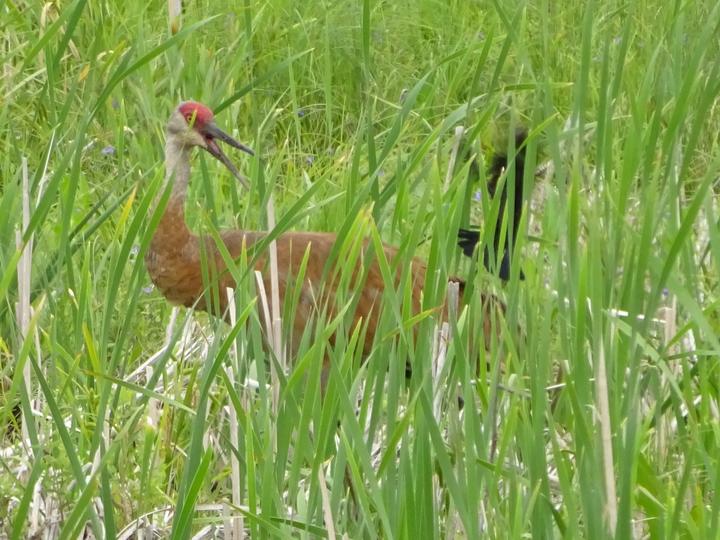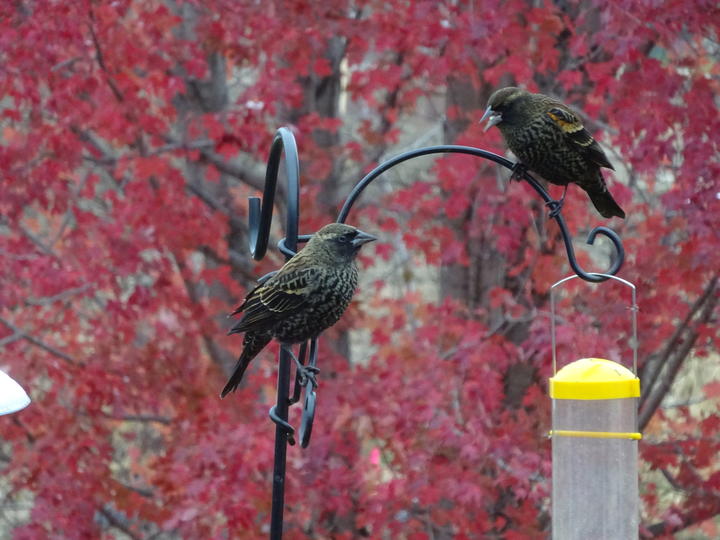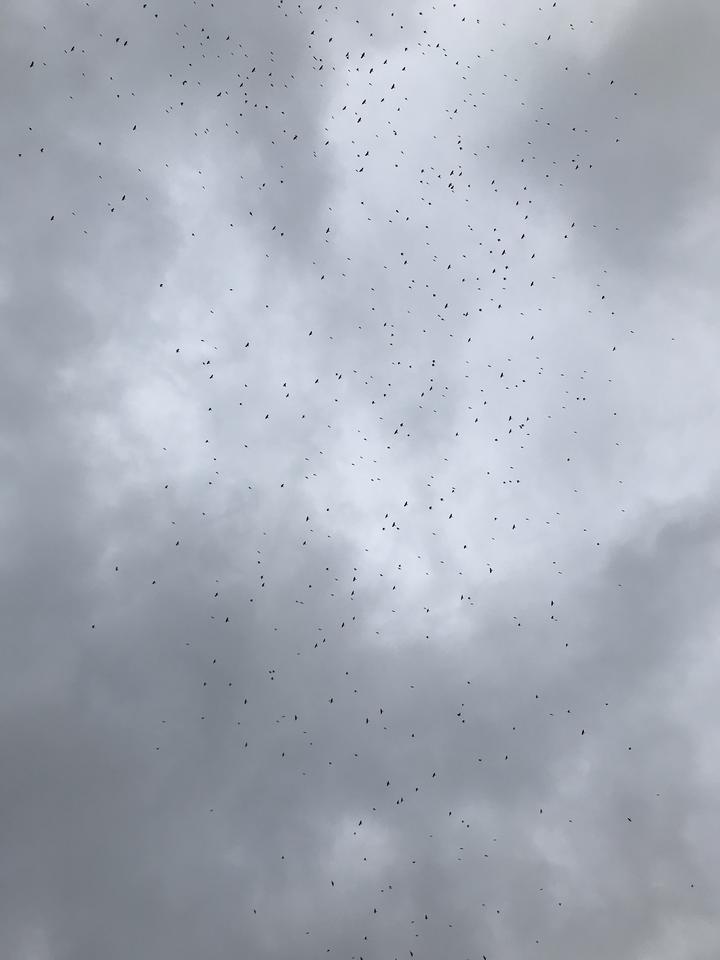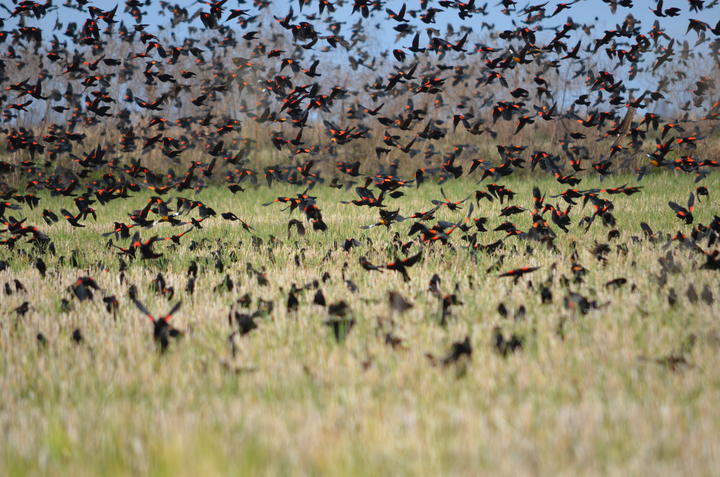More names for this bird
Anishinaabemowin: Asiginaak
Dakota: Wabdoṡa
The Dakota and Anishinaabe were among the earliest people to name Minnesota’s plants and animals, as well as to understand them in relation to Minnesota’s climate and seasons. Those original names are still in use, and several are included on the Season Watch website.
Latin (or scientific name): Agelaius phoeniceus
The scientific community has a convention of assigning agreed-upon Latin names to every kind of organism. Using scientific names helps people communicate confidently about the same organism and organize lifeforms based on how closely related they are.
French: Carouge à épaulettes
Spanish: Sargento alirrojo
Page contents
About the red-winged blackbird
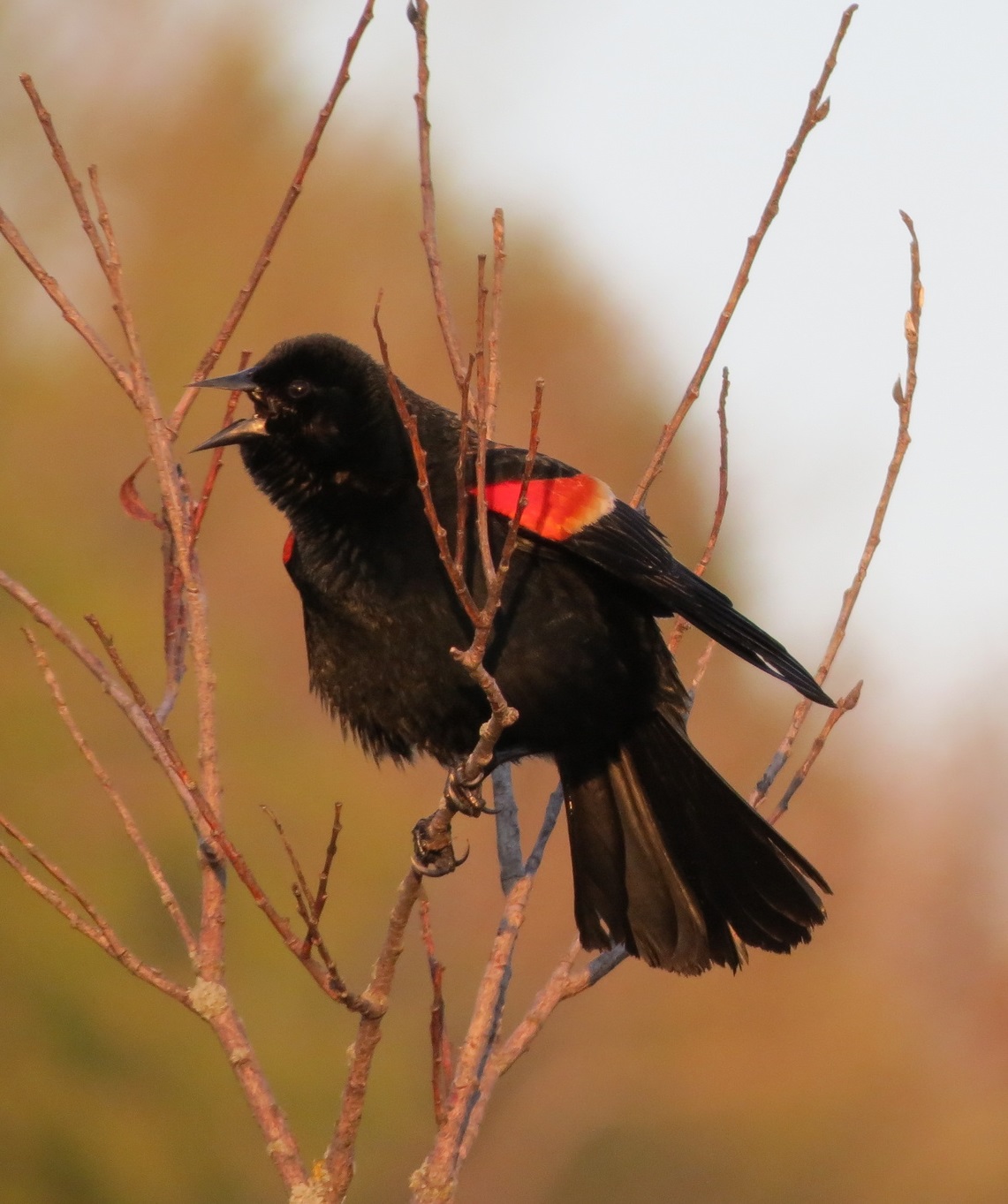
April 29, 2021, Washington County, Minnesota
Photo © Samuel Taylor, some rights reserved (CC-BY-NC)
iNaturalist observation
About the red-winged blackbird
- The red-winged blackbird is about the size of a robin. Males are black with red and yellow shoulder patches. Females are brown streaked with buff eyebrows.
- They eat mostly insects in summer, and in the fall and winter switch to seeds from the likes of cocklebur, ragweed and even corn and wheat.
- Females lay two to four eggs which are incubated 1½ to two weeks. Young leave the nest 1½ to two weeks after hatching.
- Fun fact: Sometimes they feed by probing at the bases of aquatic plants with their slender bills, prying them open to get at insects hidden inside.
- Red-winged blackbirds migrate. Expand the "Migration animation" section below to learn more.
Migration animation
Migration animation
Click the full-frame icon (lower right corner of video) to play at full size.
More about eBird's abundance animations
eBird data from 2006-2020. Estimated for 2020. Fink, D., T. Auer, A. Johnston, M. Strimas-Mackey, O. Robinson, S. Ligocki, W. Hochachka, L. Jaromczyk, C. Wood, I. Davies, M. Iliff, L. Seitz. 2021. eBird Status and Trends, Data Version: 2020; Released: 2021. Cornell Lab of Ornithology, Ithaca, New York. https://doi.org/10.2173/ebirdst.2020
Visual guide to phenology
Watch for changes in red-winged blackbirds' presence (or absence), abundance, and behaviors at different times of year. Also, pay attention to when young-of-year appear and develop.
Note to observers
This page explains general clues to watch and listen for when observing red-winged blackbird phenology. However, this page does not explain how to identify this bird or collect data in a standardized way.
- For help with identification, see The Cornell Lab's All About Birds.
- For guidance on collecting data, see Nature’s Notebook.
Audio resources
Visit All About Birds for recordings of songs and calls by red-winged blackbirds.
Graphs and historical data
Note: The Orientation Center provides a map, as well as information on reading graphs; interpreting summary statistics, who collected the data and how; and how to download datasets for independent exploration.
First seen
- Earliest: March 6 (occurred in 2000)
- Average: March 24
- Latest: April 8 (occurred in 1997)
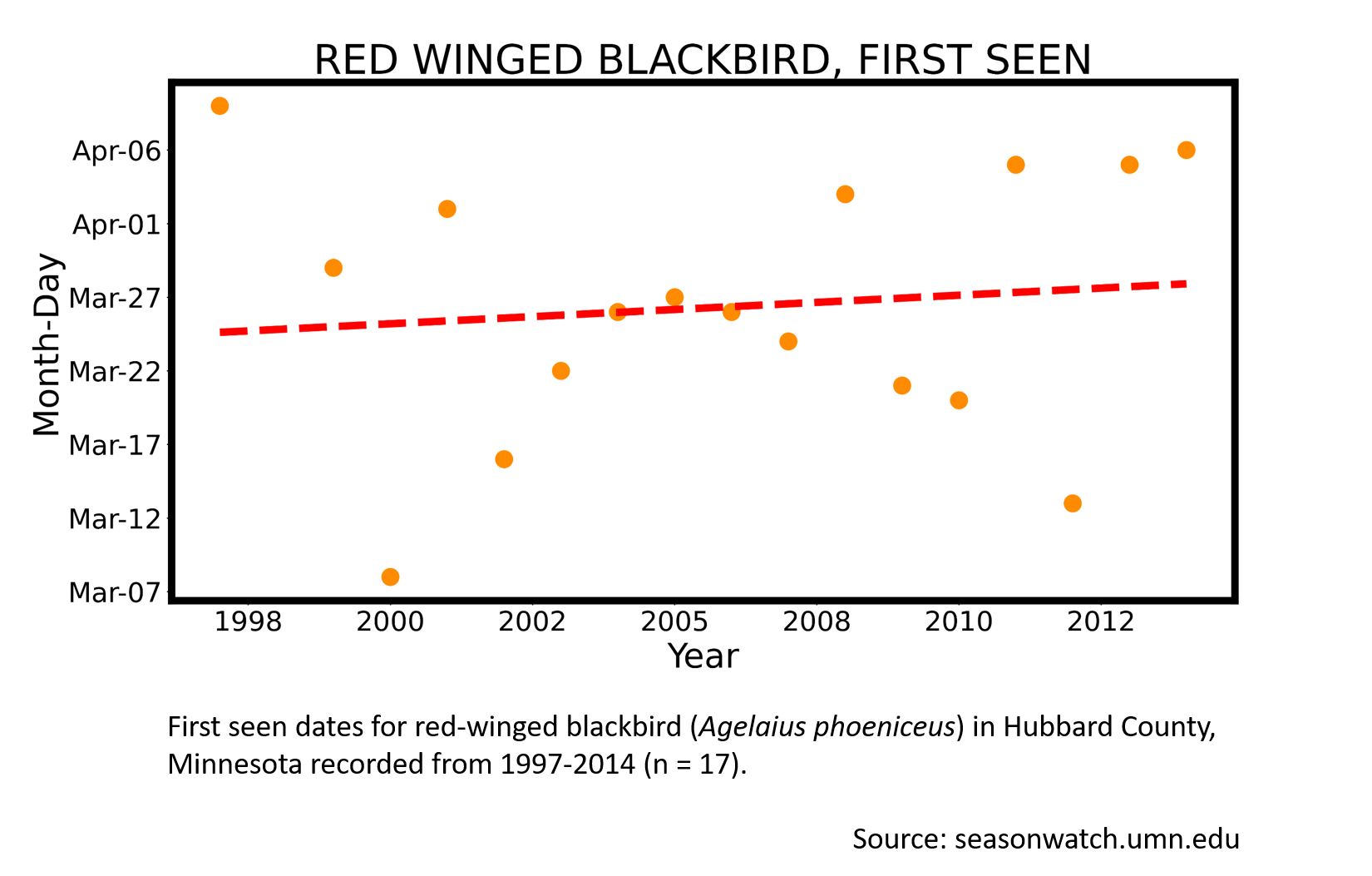
Arrival
- Earliest: January 27 (occurred in 2011)
- Average: March 14
- Latest: March 31 (occurred in 2001)
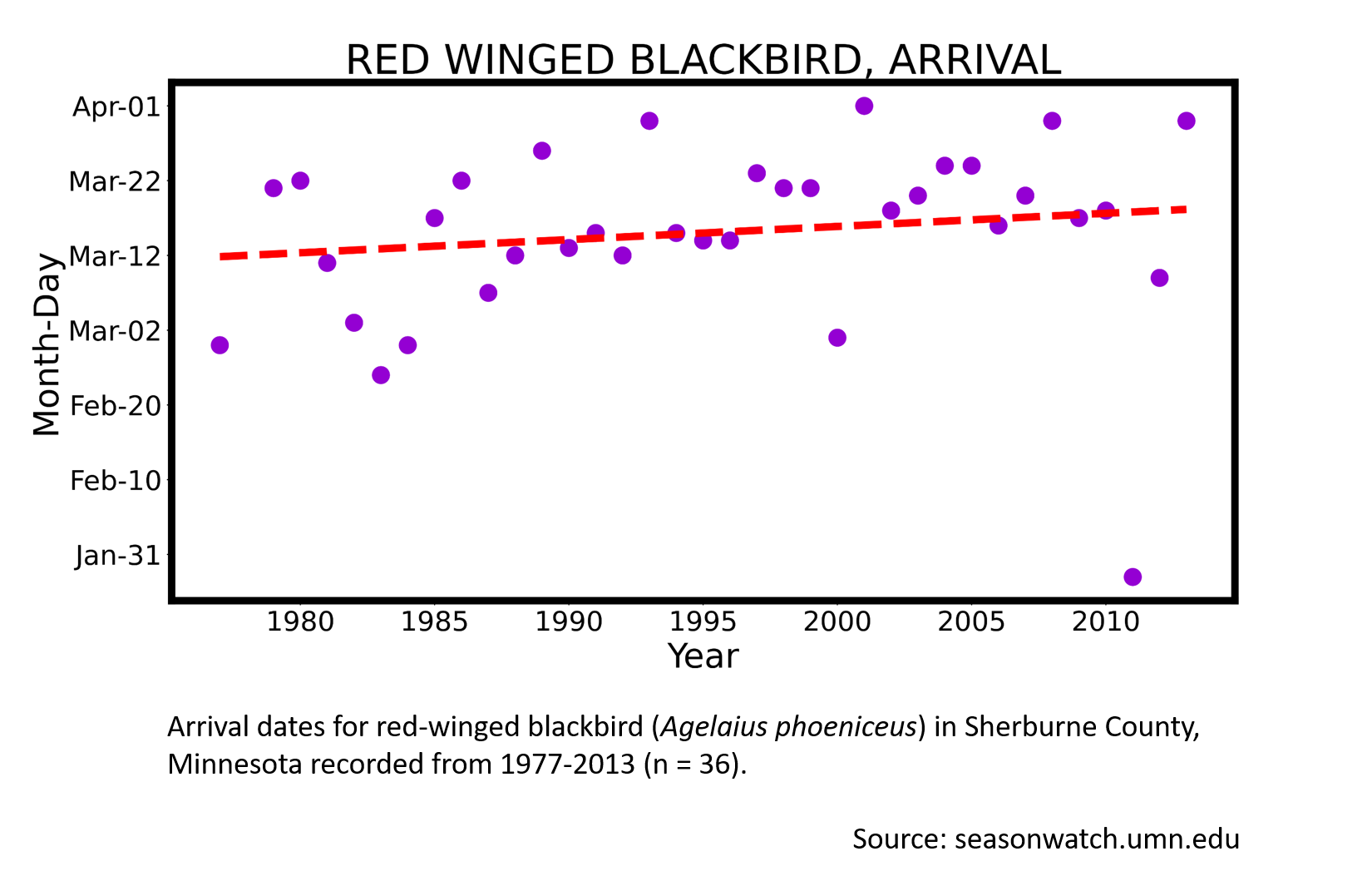
More resources
Keep exploring Season Watch
Keep exploring Season Watch
Co-author: Jayme Hogan, Minnesota Master Naturalist
